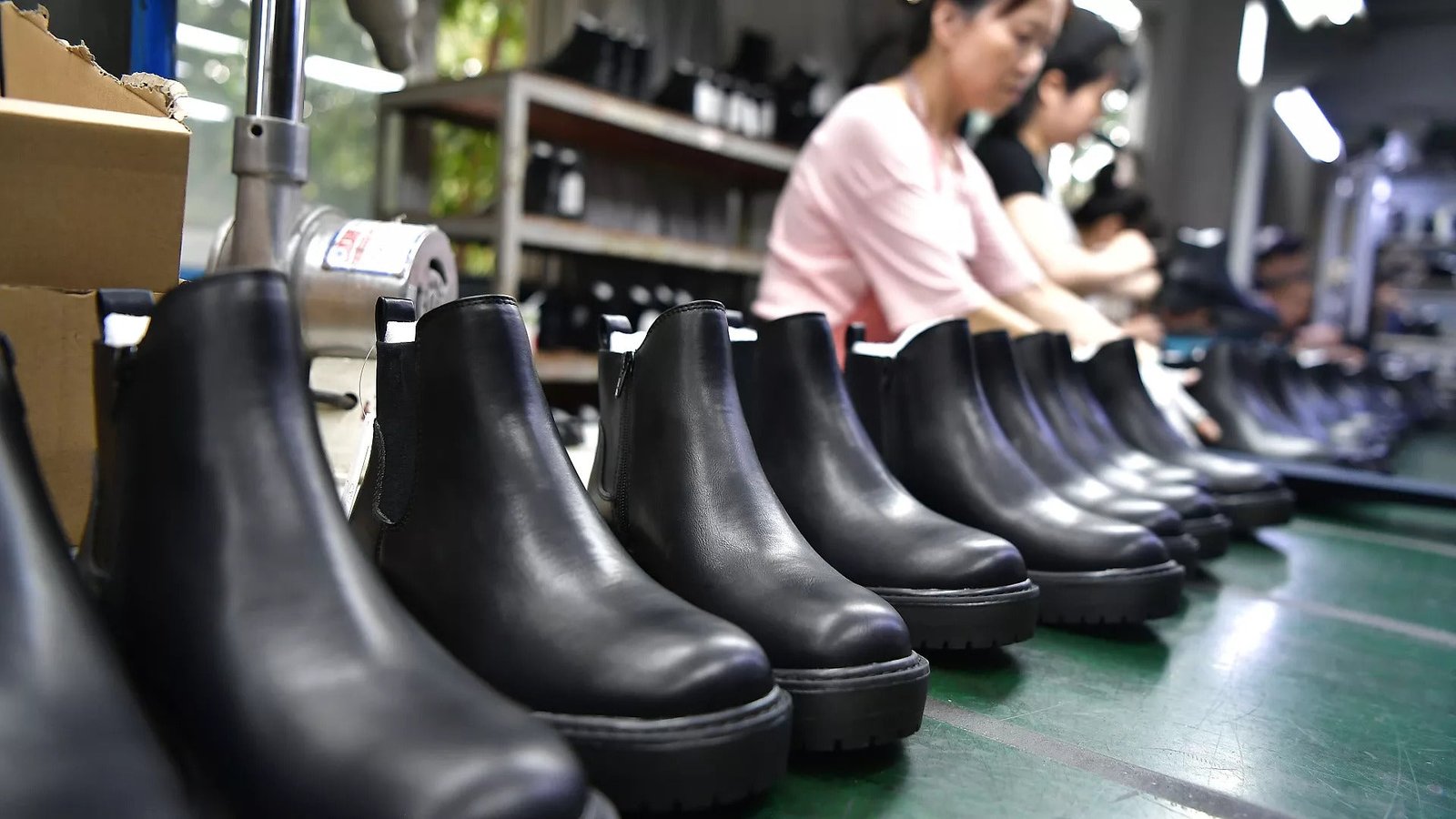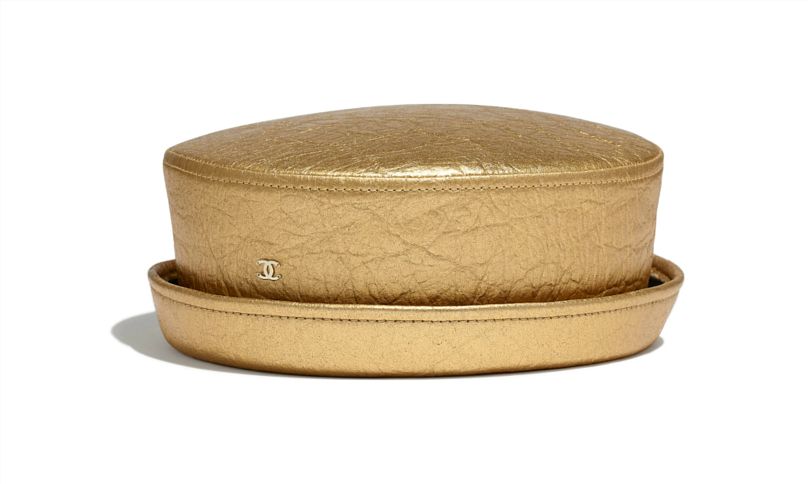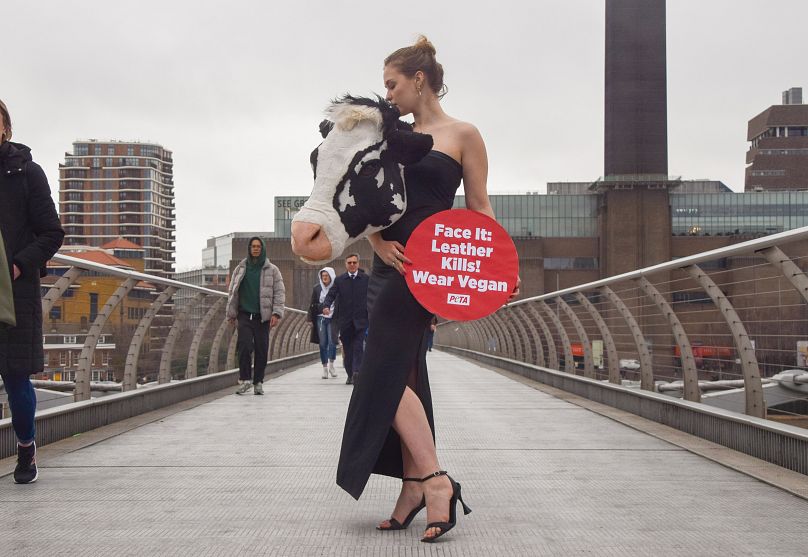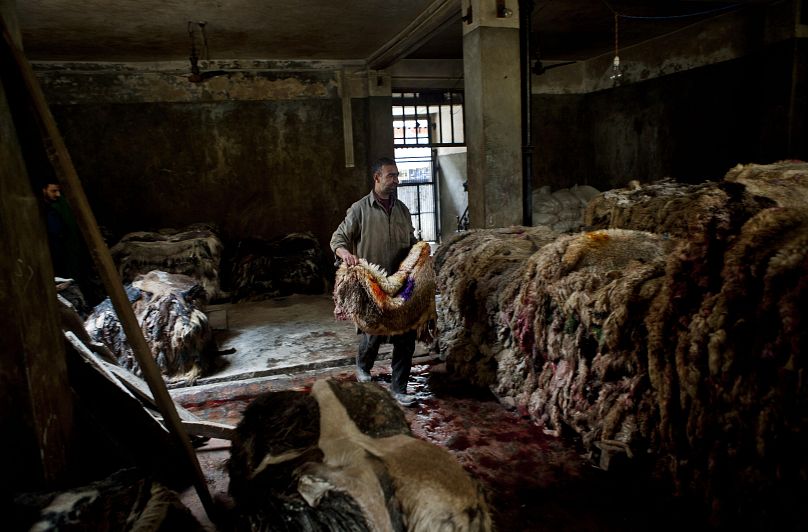
Behind the scenes at a leather factory in Fuzhou, Fujian Province of China – Copyright VCG via Getty Images
The leather industry is facing more consumers and companies turning towards vegan alternatives while scientists get closer to making bags and shoes out of lab-grown fabrics. Is this the end of leather?
Could the practice of making leather anima skins soon be extinct?
Scientists in the UK are saying it’s a very real possibility with a group working towards the goal of shoes made from fully natural “animal skin” rather than traditional leather.
Experts at the 3D Bio-Tissues company have successfully grown tissue measuring 10cm by 10cm square, marking a significant milestone in producing a natural, animal-friendly leather alternative.
While we are not quite at the point where we can hang up our cowhide jackets for good, it’s a step in the right direction for those who have been fighting against the process for years, calling for an end to the industry as a whole.
Animal-friendly alternatives
PETA’s Vice President of Corporate Projects Yvonne Taylor is full of praise for innovative companies like 3D Bio-Tissues creating lab-grown leather, telling Euronews Culture, “Lab-grown leather looks and feels like the real thing… The fashion industry is now questioning leather because of its environmental impact, and as vegan materials gain ground, we move closer to an animal-free future for fashion”.
The charity VIVA, among other official bodies, estimates a staggering one billion animals are bred and killed each year to serve the leather industry. Although a significant chunk of animals included in that figure are also used for their meat, consumers as well as the fashion industry are increasingly turning away from the fabric, in a move that echoes the shunning of real fur in clothes.
Pleather — a plastic fabric made to look like leather — has long been derided for its cheap appearance and sweaty effects. To avoid pleather, brands from the high street to haute couture have been using cleverer and more desirable alternatives.
Among them, H&M, Hugo Boss and Chanel have worked with pineapple leather and both Stella McCartney — who has never used any derivatives of animals — and Hermès have made pieces with mushroom leather.
Many still see leather as a high-quality and hard-wearing fabric, something that PETA’s Yvonne Taylor is keen to change.
“[We need] to shift the mindset around leather is the arrival of stylish, viable, attractive vegan options in fashion”, she says, adding , “it’s something that’s already happening and that lab-grown leather will help accomplish”.
In 2021, researchers at Tufts University in Massachusetts used 3D printing to create a leather alternative which closely resembled real leather both visually and mechanically. Traditional silk, though, is not animal friendly, killing silkworms to make the fabric – so the invention did not go far enough in the eyes of some industry experts.
While a number of companies and consumers are already distancing themselves from animal skins by choosing leather made from natural materials including apples, cork, cacti, pineapples and grapes, the work of 3D Bio-Tissues is likely to revolutionise the industry even further — and their work is not isolated.
In fact, lab-grown leathers are estimated to be on the market within the next few years worldwide, with quick progress in the field being seen from a number of companies.
In California, to take just one example, biotech start-up VitroLabs is developing lab-grown leather alternatives and working on how to adapt the tanning and finishing of these pieces as well as making them as durable and appealing as the real thing.
What is the true environmental impact behind lab-grown leather?
There have been questions around the environmental impact of growing leather in a laboratory, with some questioning whether it’s worse for climate change and less natural than using animal skins.
Scientists estimate that animal agriculture, which is at the heart of the leather industry, is responsible for up to 18% of all greenhouse gas emissions, mainly down to expulsions of methane. It seems that lab-grown alternatives would entirely eradicate this, but only if the traditional industry ground to a total halt, which is unlikely in the short or even medium term.
Cultivating leather, too, is thought to produce just a tiny fraction of the resources and energy used in long-established farming methods.
The tanning process is often criticised by ecologists, who say it can put toxic substances like chromium, aluminium and coal-tar derivatives into the atmosphere causing health problems for those who ingest them.
In 2011, five people tasked with cleaning the waste tank at a tannery in the Indian town of Vaniyambadi suffocated due to toxic chemical gas. This wasn’t an isolated incident with a number of others losing their lives in a similar manner and countless others suffering from the side effects of the tanning industry.
Can the popularity of leather ever really disappear completely?
Leather made from animal skins is, to the despair of some charities and activists, still incredibly popular. Bags like luxury brand Hermès’ Birkin and Kelly models — made from the hides of cows and goats — are almost always sold out despite prices often running into the tens of thousands. Their designs, made with more exotic skins like alligators, crocodiles, ostriches and lizards are especially rare, rendering them even more coveted and prized among some mega rich consumers.
At Chanel, where it’s now almost impossible to buy a bag for any less than €9,000, customers remain attracted to lambskin and python designs — and near-constant price hikes by the brand don’t seem to put off the very wealthy, who have yet to turn away from leather to cheaper alternatives.
Clearly, there’s still a way to go but a number of consumer brands are quietly moving towards at least thinking about collaborating with companies like 3D Bio-Tissues, who are aiming to grow “skin” by the metre and to work with brands keen to produce goods with the same qualities as leather, both durable and aesthetic, while avoiding any ethical issues.
Companies behind this new technology are hoping to have a fully realised product on the market within an ambitious five years.
Those five years can’t come quick enough for Yvonne Taylor, who says, “the fashion industry is now questioning leather because of its environmental impact, and as vegan materials gain ground, we move closer to an animal-free future for fashion”.
Source: https://www.euronews.com/culture/2024/01/22/is-fashion-ready-to-say-goodbye-to-leather








